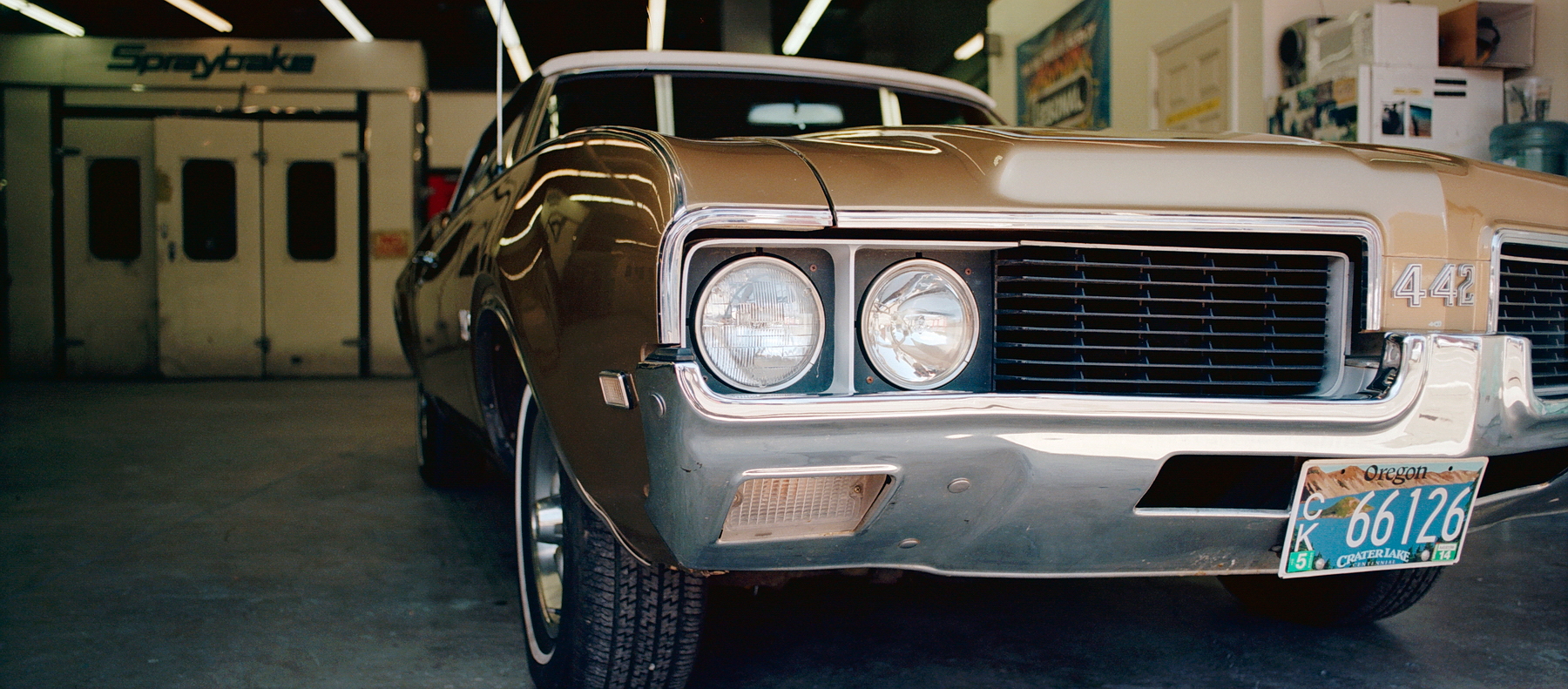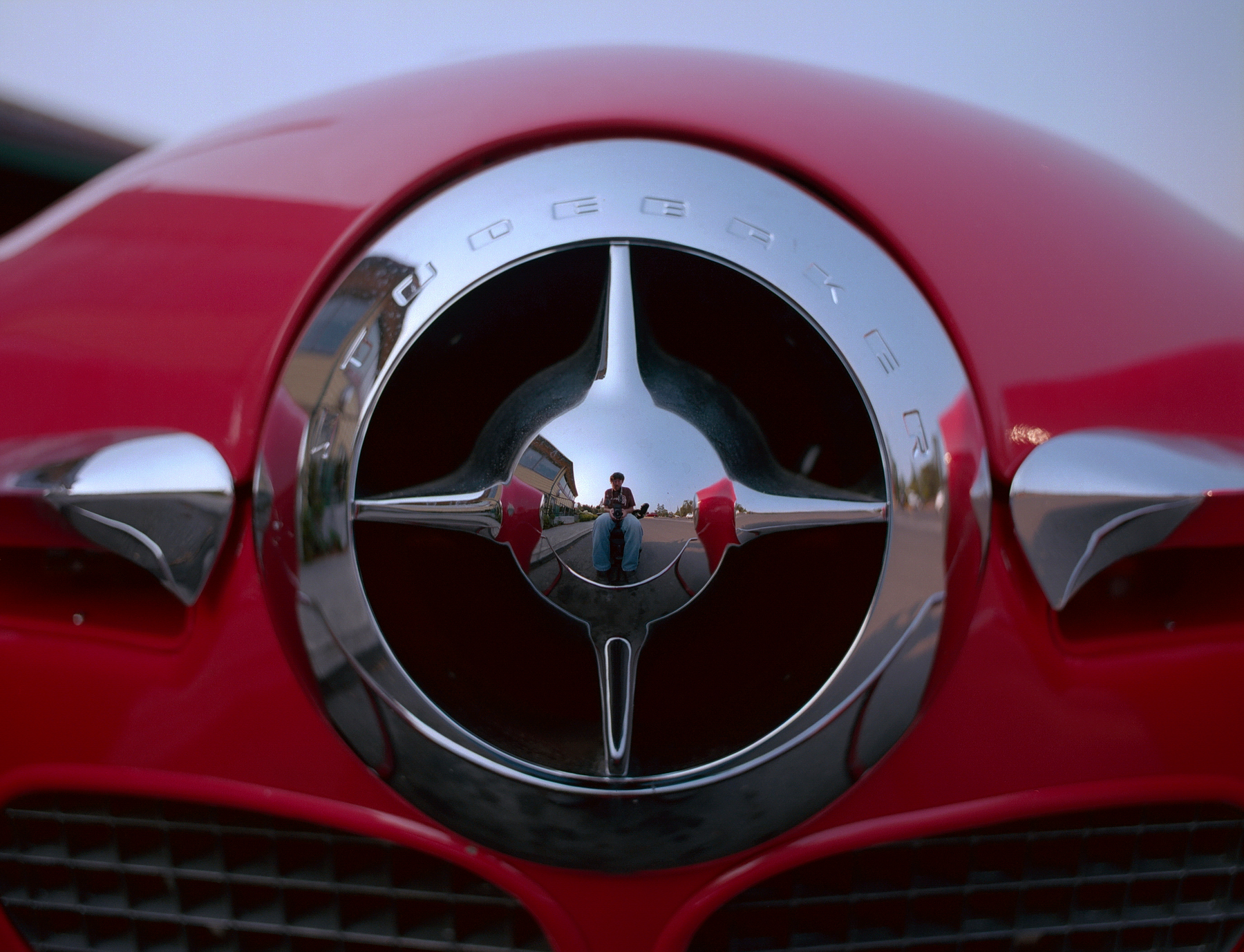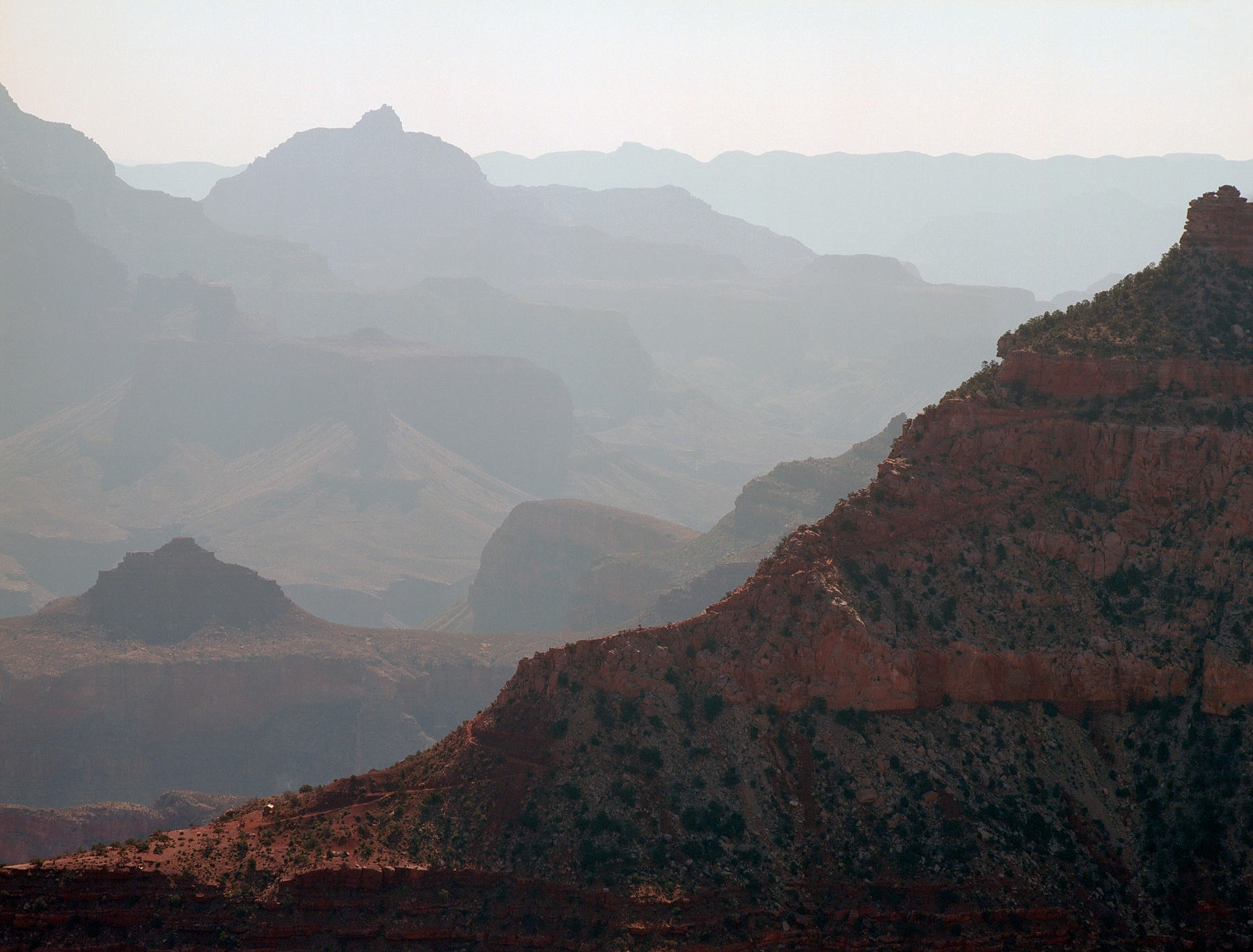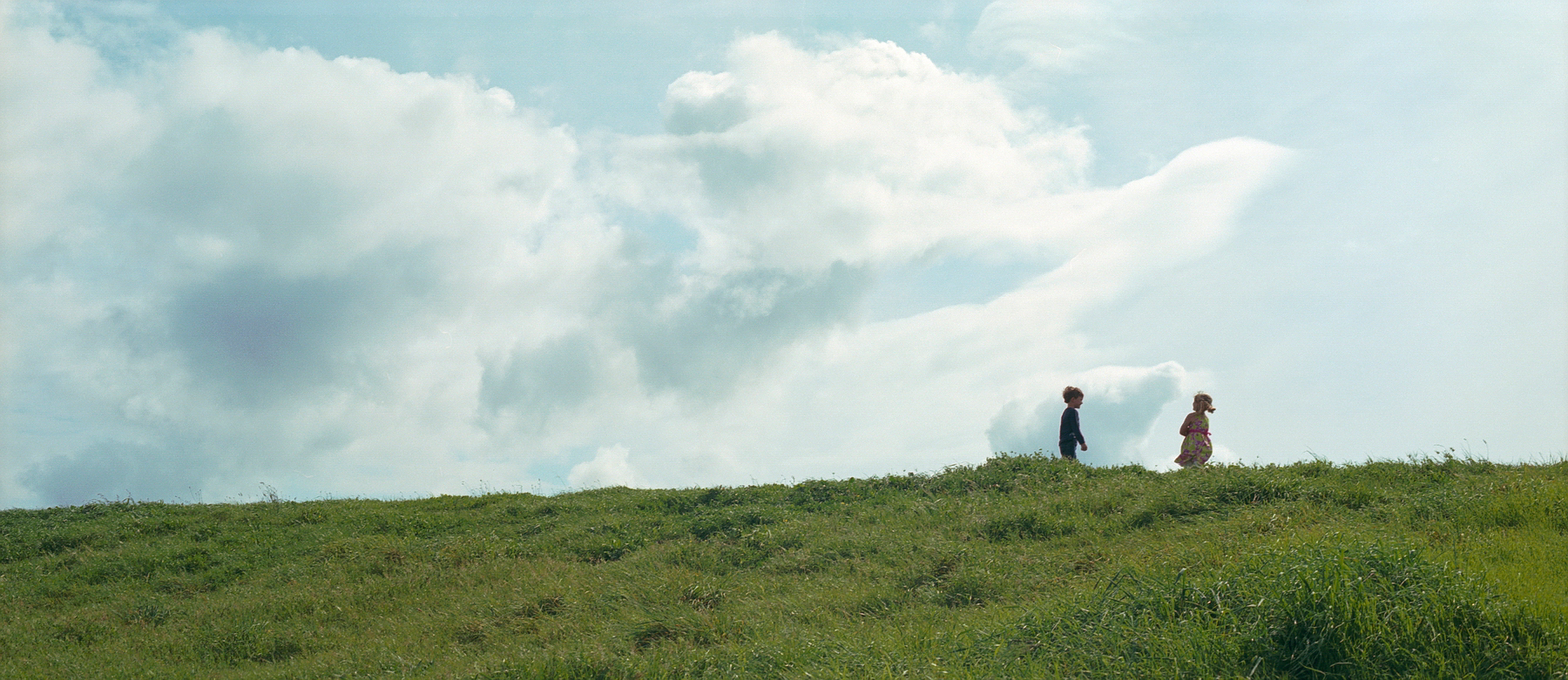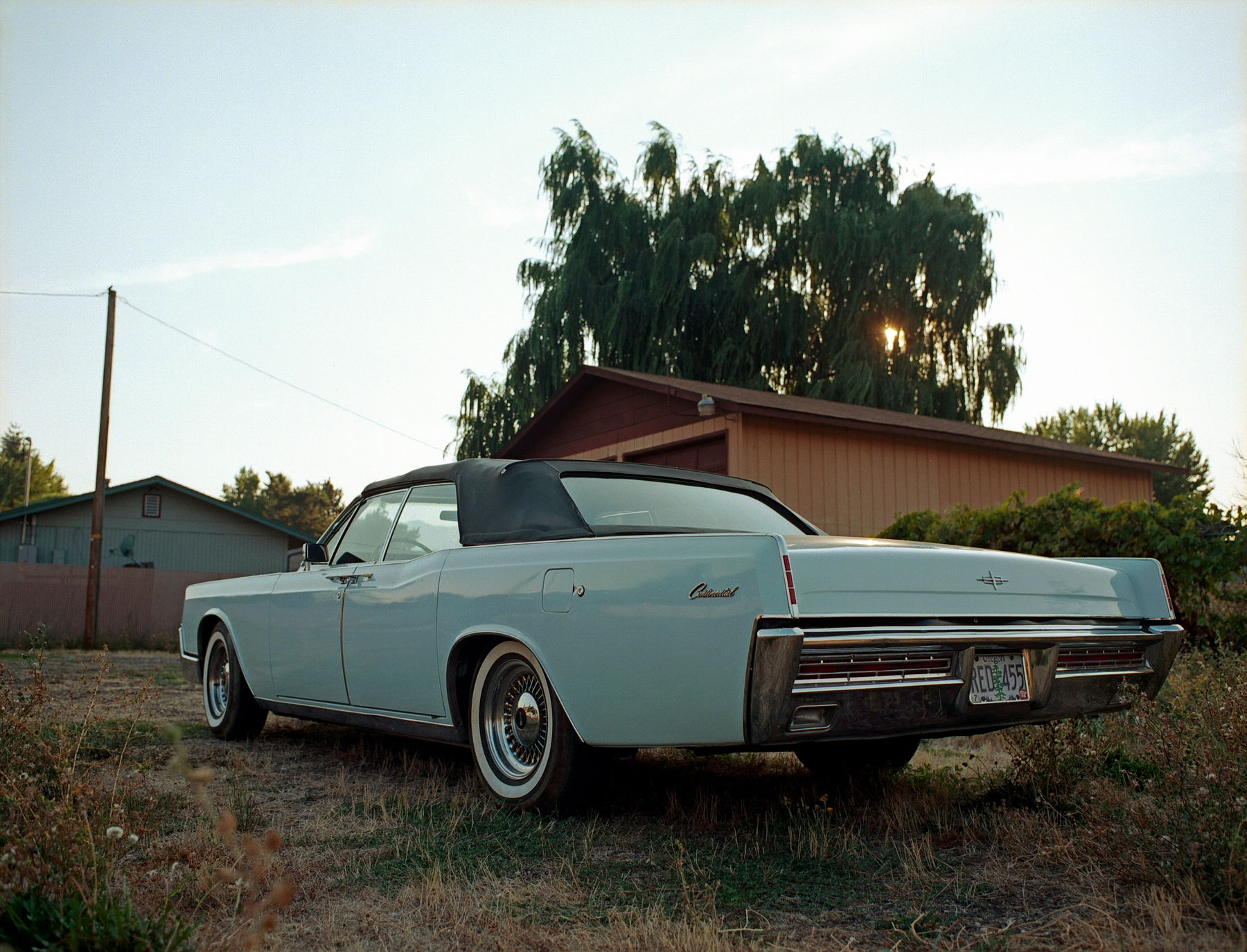.The Bronica ETR-Si is not what is usually considered a pretty or elegant camera. I suspect in designing the ETR-Si, Bronica chose to go with function over form for nearly every aspect of the camera. That doesn't mean it's not good looking, but it's not the kind of camera you'd regularly see on a list of most sought after film cameras. Those kinds of lists are usually filled with names like Rolleiflex, Hasselblad, Leica, Nikon, etc. Because of this, as well as the fact that of all medium format cameras the 6x4.5 format seems to be the least popular, the Bronica ETR system is currently (IMO) one of the best values in medium format photography.
The Camera
The Bronica ETR system is a modular SLR, similar to a Hasselblad. Nearly everything is changeable at any time. Lenses, film backs, viewfinders, winders, and focus screens, are all changeable whether you're part way through a roll or not. In some ways, the actual camera body isn't much more than a box that allows you to attach all the other bits. Compared to a Hasselblad, the Bronica ETRSI actually has a few features that I prefer, like the ability to swap viewfinders without removing the back, and multiple exposure with the flick of a switch. The shutter (in-lens leaf shutter) is electronically controlled via the body. To some, this is a problem as it makes the camera reliant on batteries, but it does allow for some added features, like the ability to have Aperture Priority AE (with the correct viewfinder prism) and selectable shutter speeds from 1/500s -8 seconds, plus Bulb.
There are three main variants of the Bronica ETR cameras. The original ETR, the ETRS and finally the ETR-Si. There is also a ETRC and ETR-C, which are basically non-removable film back versions of the ETR and ETRS, as well as a ETR-S, a slightly revised version of the ETRS. The original ETR was introduced in 1976. The ETRS added changeable focus screens and better AE functionality, and the ETR-Si added mirror lock up, and TTL flash metering.
The System
The Bronica ETR system is quite extensive, and includes nearly every lens and accessory one could hope for. From 1976-2004, Bronica produced around 30 different lenses, in 18 different focal lengths (include 4 zoom lenses), for use with the ETR system. There are film backs for 120 film, 220 film, 70mm, regular 35mm, panoramic 35mm, and Polaroid. 5 different viewfinders, 3 different grip/winders, 7 different focus screens, a bellows attachment, tele-converters, and extension tubes.
My Kit
Over the past few years, I have slowly built up my kit.
I currently have 4 lenses: a MC 40/4, a MC 50/2.8, a EII 75/2.8, and a MC 150/4.
I have 3 film backs, a 120 back, a 220 back , and a 35mm panoramic back.
For finders, I have a waist level finder as well as an unmetered prism finder.
I also have 2 focus screens, a grid screen with microprism, and the special screen for 35mm film which has etched lines for the standard 35mm frame and the 35mm panoramic frame.
As I have only used the camera, lenses, and accessories that I have, this review really only pertains to that gear.
In Use
As I mentioned before, the Bronica ETR system seems to have been designed with an emphasis on function rather than form, and this is apparent when using the camera. It is a very easy camera to use. For the most part, every major function is logically placed and operation is self explanatory. Shutter speeds are selected with the large shutter speed dial on the side of the body. Aperture value is selected via a traditional aperture ring on the lens. All the lenses I have used have nice big focus rings that are well dampened, and turn smoothly. The viewfinder and focus screens are nice and bright, and so finding accurate focus is pretty easy. Like a Hasselblad, the Bronica doesn't have an instant return mirror, so after taking a photo, you need to wind/advance the film which will lower the mirror again. Film winding is done using the fold out handle, or if you have the speed grip it has a thumb lever more like those found on a traditional 35mm SLR. Because of the in-lens leaf shutter, you do need to wind/cock the shutter before removing the lens. You never want to remove or attach a lens without the shutter cocked. Changing film backs is simple, insert the darkslide, press the back release button at the bottom of the darkslide, lift off the back, and attach another back. The camera and backs sync automatically, so swapping backs can be done at any time, whether you've advanced the film or not. Viewfinders can be changed without removing the back, which is a nice feature. On a Hasselblad you first need to remove the back, then you can can remove and change the viewfinder.
Things I Like
The modularity of the system, and how easy it is to swap backs and finders.
The glass. Considering that you can usually find most of the Zenzanon E lenses for around $50-$150, they are excellent lenses and capable of superb results.
The 135W panoramic back. I actually bought the camera because of the 135W back.
How inexpensive these cameras are. If I don't include the panoramic back, I doubt I have much more than $500 in my entire kit.
Things I Don't Like
The mirror lock up. If you use mirror lock up, you have to always remember to reset the MLU switch before you wind the camera, otherwise the mirror will instantly go back up as soon as you wind the camera and you won't be able to use the viewfinder. You end up wasting a frame every time you forget this.
The size of the lenses. I assume that the leaf shutter mechanism adds a fair bit to lenses and so they end up being a bit big. If I put the Zenzanon 75/2.8 next to my Pentax 645 75/2.8, the Zenzanon seems nearly twice the size.
The 135W Back
In my opinion, the 135W film back is reason enough to get a Bronica ETR-Si. With this back, you can shoot 35mm film and you end up with a 24mm X 54mm negative. That is almost as wide as a Hasselblad Xpan, and those cameras are like $1500 minimum. The 135W isn't exactly inexpensive though, and you might spend more on the back than you would on a complete ETR-Si camera setup, but it's still a lot less than the Xpan. The worst part of the 135W is actually finding one to buy. I spent the better part of a year looking for one before finding one. If you are able to find a 135W back, you need to get the 135 focus screen for accurate framing. In a pinch, you could get by using a grid screen (the horizontal lines above and below center are close to the top and bottom of the frame), but the 135 focus is more accurate.
I have quite a few cameras and while the ETR-Si is not my absolute favorite (it is one of my favorites), it is by far my most used camera. The fact that I use it so much speaks volumes for what a good camera it is. It has become my go to travel camera. With a 120 back, a 220 back, and the 135W back, it is like having 3 cameras in one.
All photographs: Kodak Ektar



